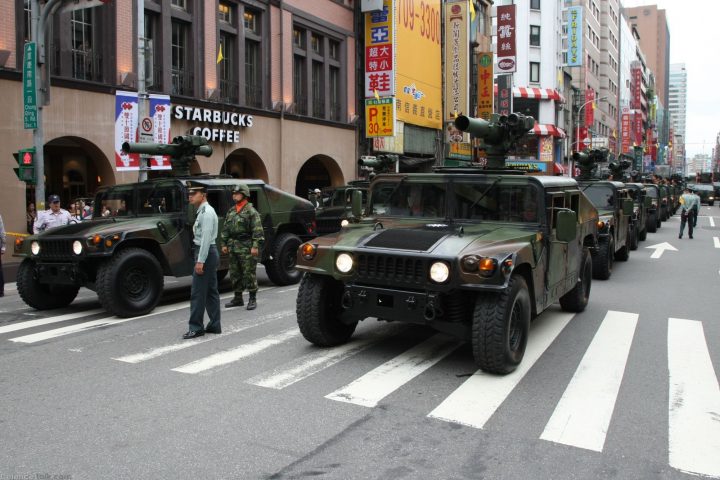By Abdus Sattar Ghazali
China has become the world’s fifth-largest arms exporter, according to the Stockholm International Peace Research Institute (SIPRI).
China replaces Britain in the top five arms-dealing countries between 2008 and 2012, a group dominated by the United States and Russia, which accounted for 30 percent and 26 percent of weapons exports, SIPRI said Monday March 13.
Germany and France ranked third and fourth on the arms exporter list.
“China is establishing itself as a significant arms supplier to a growing number of important recipient states,” Paul Holtom, director of the SIPRI Arms Transfers Program, said in a statement.
Commenting on the SIPRI report, Chinese Foreign Ministry spokesman Hong Lei said China was a responsible arms exporter which strictly adhered to international law.
“On arms exports, China sticks to three principles. First, that it is conducive to the recipient country’s justifiable self-defense needs. Second, it does not damage regional and global peace, security and stability. Third, it does not interfere in other countries’ internal affairs,” Reuters quoted him as saying.
Chinese attack helicopters, missiles, unmanned aerial vehicles and air defenses were on public show for the first time at the Zhuhai air show in southern China in November 2017.
The SIPRI report showed China delivered major arms to 48 countries in the past five years, with Pakistan topping the list, followed by Bangladesh and Algeria.
“Pakistan – which accounted for 55 percent of Chinese arms exports – is likely to remain the largest recipient of Chinese arms in the coming years due to large outstanding and planned orders for combat aircraft, submarines and frigates,” SIPRI said.
Myanmar received 8 percent of China’s weapons exports. Bangladesh received 7 percent of the arms while Algeria, Venezuela and Morocco have bought Chinese-made frigates, aircraft or armored vehicles in the past several years.
After decades of steep increases in military spending and cash injections into domestic contractors, experts say some Chinese-made equipment is now comparable to Russian or Western counterparts.
Chinese military drones in UAE
Defense analysts believe that the Chinese drone, the Wing Loong II, is now being used by the United Arab Emirates military while the UAE remains barred from buying weaponized drones from the United States, the Associated Press reports.
That purchase, as well as Abu Dhabi hosting the drone exhibition and conference last month in the Emirati capital, shows the power these weapons now hold across the Middle East, the AP said.
Top UAE officials, including Abu Dhabi’s crown prince, Mohammed bin Zayed Al Nahyan, were on hand for the drone conference, held last month.
Al-Dhafra Air Base near Abu Dhabi, which hosts some of the 5,000 American troops in the UAE, is also home to some of the US military’s unmanned aircraft that flew missions over Iraq and Syria.
Chief among those aircraft is the Predator, built by San Diego-based defense contractor General Atomics. The UAE previously bought some US$200 million worth of surveillance-only Predator drones from General Atomics.
The Obama administration opposed selling the UAE armed versions of the Predator under the Missile Technology Control Regime, a 30-year-old agreement that aims to limit the spread of missile technology.
But that apparently did not stop the UAE from buying weaponized drones. Satellite photographs taken of a mysterious Emirati airbase in the country’s deep south – a desert area known as the in the Empty Quarter – appear to show three Wing Loong IIs there, according to a January article by IHS Jane’s Defense Weekly.
U.S. remains the largest arms exporter
In 2013–17 the USA accounted for 34 per cent of total arms exports, according to SIPRI. Its arms exports increased by 25 per cent between 2008–12 and 2013–17. US arms exports in 2013–17 were 58 per cent higher than those of Russia—the second largest arms exporter in that period.
It may be pointed out that SIPRI presents data for 5-year periods.
The USA supplied major arms to 98 states in 2013–17. Exports to states in the Middle East accounted for 49 per cent of total US arms exports in that period.
Arms exports by Russia decreased by 7.1 per cent between 2008–12 and 2013–17. France increased its arms exports by 27 per cent between the two periods and was the third largest arms exporter in 2013–17. Arms exports by Germany—the fourth largest exporter in 2013–17—fell by 14 per cent between 2008–12 and 2013–17. However, German arms exports to the Middle East increased by 109 per cent.
Despite its continuing tensions with India and ongoing internal conflicts, Pakistan’s arms imports decreased by 36 per cent between 2008–12 and 2013–17. Pakistan accounted for 2.8 per cent of global arms imports in 2013–17. Its arms imports from the USA dropped by 76 per cent in 2013–17 compared with 2008–12.
‘The tensions between India, on the one side, and Pakistan and China, on the other, are fuelling India’s growing demand for major weapons, which it remains unable to produce itself,’ said Siemon Wezeman, Senior Researcher with the SIPRI Arms and Military Expenditure Programme. ‘China, by contrast, is becoming increasingly capable of producing its own weapons and continues to strengthen its relations with Pakistan, Bangladesh and Myanmar through arms supplies.’
European states remain the main arms exporters to the Middle East region and supplied over 98 per cent of weapons imported by Saudi Arabia.’
In 2013–17 Saudi Arabia was the world’s second largest arms importer, with arms imports increasing by 225 per cent compared with 2008–12. Arms imports by Egypt—the third largest importer in 2013–17—grew by 215 per cent between 2008–12 and 2013–17. The United Arab Emirates was the fourth largest importer in 2013–17, while Qatar (the 20th largest arms importer) increased its arms imports and signed several major deals in that period.
Abdus Sattar Ghazali is the Chief Editor of the Journal of America (www.journalofamerica.net). He is the author of several books including Islam & Muslims in the 21st Century published in 2017.










